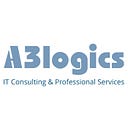As the competition in the market gets fierce, developing and introducing a new product gets more crucial. Companies have to come up with an extraordinary product and out of the box idea that can withstand the competition from top brands. Also, they must evolve continuously to stay updated and get an edge over their competitors. That is why product engineering services have become an integral part of any development process. Those who are living under the rock, product engineering includes everything, from development, designing to assembling, testing a software, app, or a system. This engineering consulting activity is important to give your business an extra push and scope for further quality improvement, reliability, functionality, and long-term consistency.
There are 5 stages of the product engineering process with each of them being a vital part to attain success and deliver a seamless product. Let us discuss all the phases in detail and understand their importance:
1. Brainstorming & Idea Generation
In this initial stage, the focus is to discover innovative and new ideas for the product. The team of product engineers discusses your current strategies, resources used, future expansion plans, objectives, and collect more data to conceptualize a perfect app or website for your business. The experts also create documentation to determine project goals, requirements, and other specifications before they start with design or development. To gather reliable and authentic data, engineers use sources, such as newspapers, competitors’ information, customer reviews, journals, surveys from suppliers & employees, and more. Of course, small businesses have limited resources and techniques for technical products but large enterprises have an advantage here. Once the team has all the information and documents, the professionals discuss all the aspects of the project to reach a better plan which will work as a road-map to guide the overall development process.
2. Product Designing
Based on the collected data and information, the product engineering team will start creating some meaningful and feasible concepts for the project. As they have already discussed all the elements of the project in the first stage, they will consider those points while working on the designs. Of course, engineers seek opinions and expert guidance from workers, customers, and other teams to avoid any investment in unfeasible designs. With app designing solutions, clients have the opportunity to save a lot of time and money that could be consumed in other core and productive activities. There are many external factors as well that needs to be taken care of, such as compliance, legal guidelines, technology, competition, and more which can influence business decisions. By the end of this stage, product developers will have only practical and effective ideas that are modified and polished in the next phase.
3. Concept & Product Development
This is the stage to screen realistic and the best idea after considering all the significant factors, such as costs, profit, revenue, etc. Our product engineering solutions include SWOT analysis where top engineers identify business strengths, weaknesses, opportunities, and threats. Moreover, the target group and market are also identified to help you know your niche. Now, a comprehensive blueprint is prepared to assess the total cost involved in designing, testing, deployment, re-engineering, etc. As you approve of the prototype or blueprint, the team will start with the development process using an agile methodology. The stage also includes regular meetings and discussions to keep track of the progress. Make sure that you know the core features that you want to include in the app or software to ignore any re-working.
4. Testing & Evaluation
As developers breathe life into the app or software, it is important to conduct regular testing to identify any errors or bugs. The quality assurance team works constantly with developers through the product development process to make sure that it meets all the standards set by the clients. Testing and evaluation is the perfect chance to find any technical glitch or issue in the app or software and also to see if all the features are supported well. There are different testings for apps, software, websites, or systems that testers do. For example, in case of an app, beta tests are run to find flaws and fix them instantly. We would recommend business owners to conduct tests themselves to evaluate the quality and get assured of a flawless product.
5. Product Roll-out
Last but not least. It’s time to introduce your product in the market and see if it meets your expectations. Whether you have opted for app development or software development, your ultimate goal is to launch it for users and grab their attention. So, once you are satisfied with your product and know that it’s ready for the end-users, engineers will help you with deployment. Please note that the research done during conceptualization affects the location and timing of the launch. The common practice is to launch the app or software with core features, supporting operations, and technical support team. Then move further once you reach the audience. Based on their suggestions and feedback, you can make improvements and introduce updates.
Conclusion
Yes, product engineering is a new concept for businesses and organizations but embracing it at the right time will only prove beneficial to your business operations. It will ensure top-notch and seamless app, software or system development for your enterprise which we are sure is your ultimate goal. Isn’t it?
